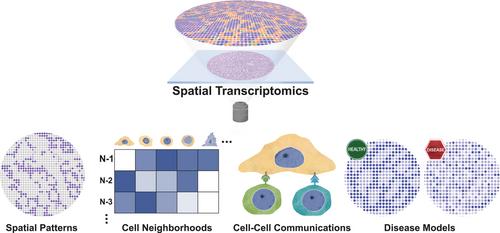Applications of spatial transcriptomics in studying spermatogenesis
Abstract
Spermatogenesis is a complex differentiation process that is facilitated by a series of cellular and molecular events. High-throughput genomics approaches, such as single-cell RNA sequencing, have begun to enable the systematic characterization of these events. However, the loss of tissue context because of tissue disassociations in the single-cell isolation protocols limits our ability to understand the regulation of spermatogenesis and how defects in spermatogenesis lead to infertility. The recent advancement of spatial transcriptomics technologies enables the studying of the molecular signatures of various cell types and their interactions in the native tissue context. In this review, we discuss how spatial transcriptomics has been leveraged to identify spatially variable genes, characterize cellular neighborhood, delineate cell‒cell communications, and detect molecular changes under pathological conditions in the mammalian testis. We believe that spatial transcriptomics, along with other emerging spatially resolved omics assays, can be utilized to further our understanding of the underlying causes of male infertility, and to facilitate the development of new treatment approaches.


 求助内容:
求助内容: 应助结果提醒方式:
应助结果提醒方式:


